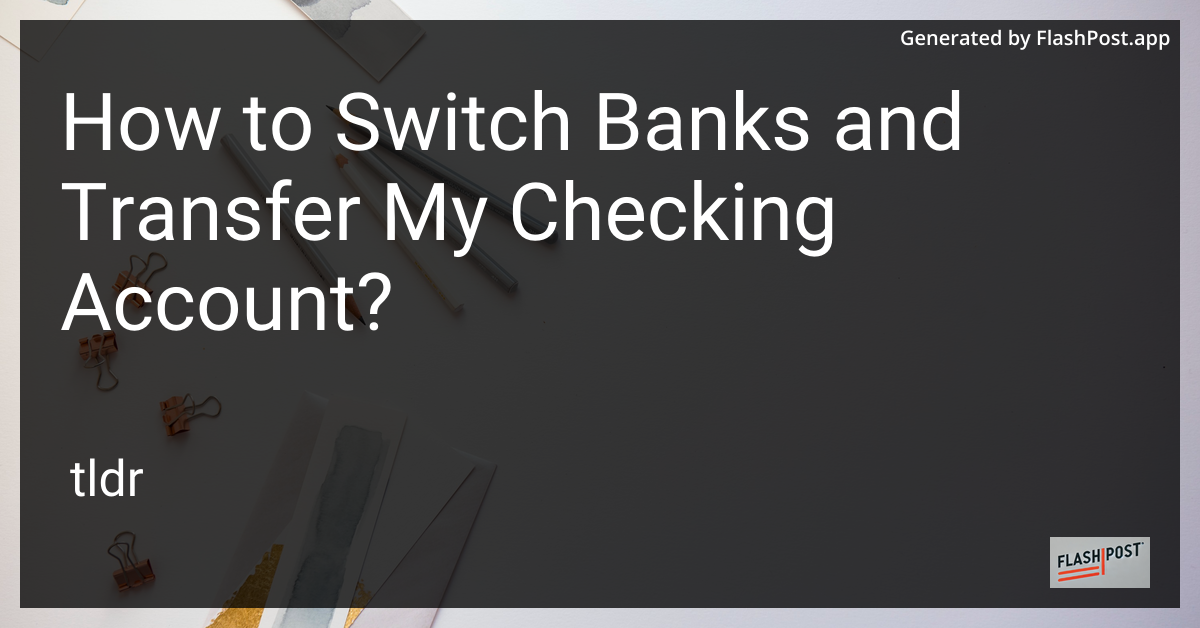
Switching banks can seem like a daunting task, but with the right approach, you can transition smoothly without any disruption to your financial life. Whether you're in search of better interest rates, lower fees, or improved customer service, moving your checking account to a new bank can be beneficial. Here’s a comprehensive guide to help you make the switch seamlessly.
1. Choose Your New Bank Wisely
Before you begin the process of switching banks, it's essential to research and choose the best financial institution that fits your needs. Consider factors such as fees, interest rates, customer service, and convenience. For further insights, you can explore top banks for checking accounts.
2. Open Your New Bank Account
Once you’ve selected a bank, the next step is to open a new checking account. This can often be done online or by visiting a branch. Be prepared to provide necessary documents such as identification and proof of address.
3. List and Transfer Automatic Payments and Deposits
Create a list of any automatic payments and direct deposits linked to your current account. This includes utility bills, subscriptions, mortgage or rent payments, and payroll deposits. It’s crucial to notify these institutions about your new bank details. For those considering future financial endeavors, you might want to check top banks for home loans in Massachusetts.
4. Transfer Funds to Your New Account
With your new account open and ready, it's time to transfer funds. Ensure you have enough money in the new account to cover any immediate expenses, yet keep sufficient funds in your old account to clear any outstanding payments or checks.
5. Monitor Both Accounts
For a few weeks, keep an eye on both your old and new accounts to ensure all transactions are processed correctly. This also helps in spotting any automatic payments you might have missed in the transfer process.
6. Close Your Old Account
Once you're confident that all your transactions have settled and your new account is fully operational, initiate the closure of your old account. Some banks require you to fill out a form or complete the process in person.
7. Dispose of Old Checks and Cards
After closing your old account, make sure to securely dispose of your old checks and cut up any old debit cards to prevent fraud or identity theft.
By following these steps, you’re ensuring a hassle-free transition to your new bank. Should you be interested in how major banks are implementing sustainable practices, it's worth investigating.
Switching banks is a significant decision, but with a bit of planning and organization, it can be done smoothly and efficiently, enabling you to better manage your finances and meet your banking needs. Happy banking!